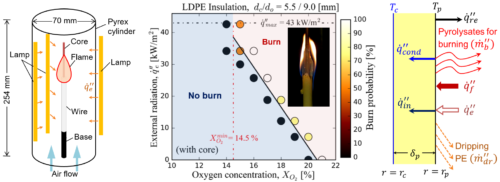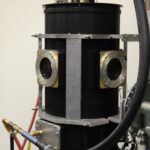Researchers:
Jeanette Cobian-Iñiguez, Carlos Fernandez-Pello
Accelerated tree mortality in the Sierra Nevada has led to the rapid accumulation of large downed fuels on the forest floor. The presence of these fuels represents a shift in surface fuel layer composition; from thin fuels such as grasses and debris which burn in the flaming regime, to large downed trees with a high risk of burning in the smoldering regime. Smoldering fires are characterized by lower temperatures, heat release and spread rates than flaming fires and produce greater concentrations of gas and particulate emissions. The latter suggests that smoldering fires are highly pollutant wildfires. In addition, because smoldering fires require lower temperatures to ignite, transition from smoldering to flaming is often considered a shortcut to flaming ignition. Although smolder propagation rate has been measured for natural fuels, primarily wood, little is known quantitatively of the smolder burn rate, temperature and emissions characteristics particularly under the influence of wind. To fill this void, we aim to quantify the rate of smoldering burn rate and smoldering to flaming transition. Although our focus is on the Sierra Nevada, results can be applicable to similar ecosystems enduring heightened tree mortality. Experiments to study smoldering behavior are conducted in a bench scale wind tunnel where fuel beds were simulated using wooden cribs. We examine smoldering burning rate and smoldering to flaming behavior under various crib configurations and wind velocities. Crib permeability is varied by changing stick distance and thickness. Burning rate is calculated from measurements of mass loss rate, smoldering to flaming transition was diagnosed in the initial state of the study through visual diagnostic obtained from experiment video. Measurement of emissions including CO, CO2 and NOx are taken with the goal of obtaining emission rate and calculating yields of fire products.
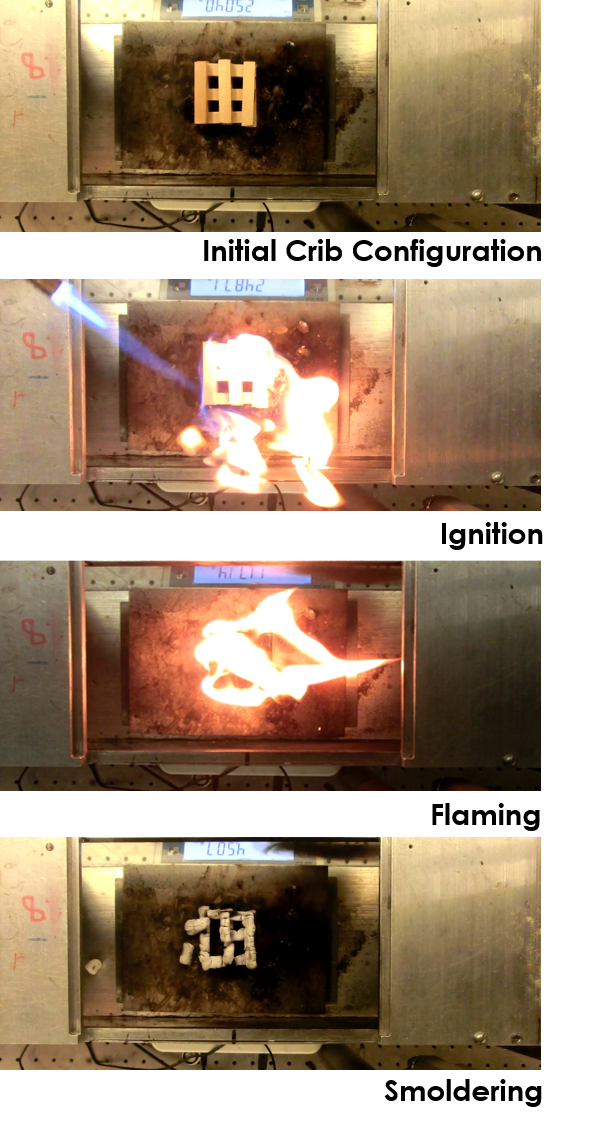
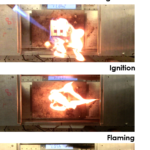

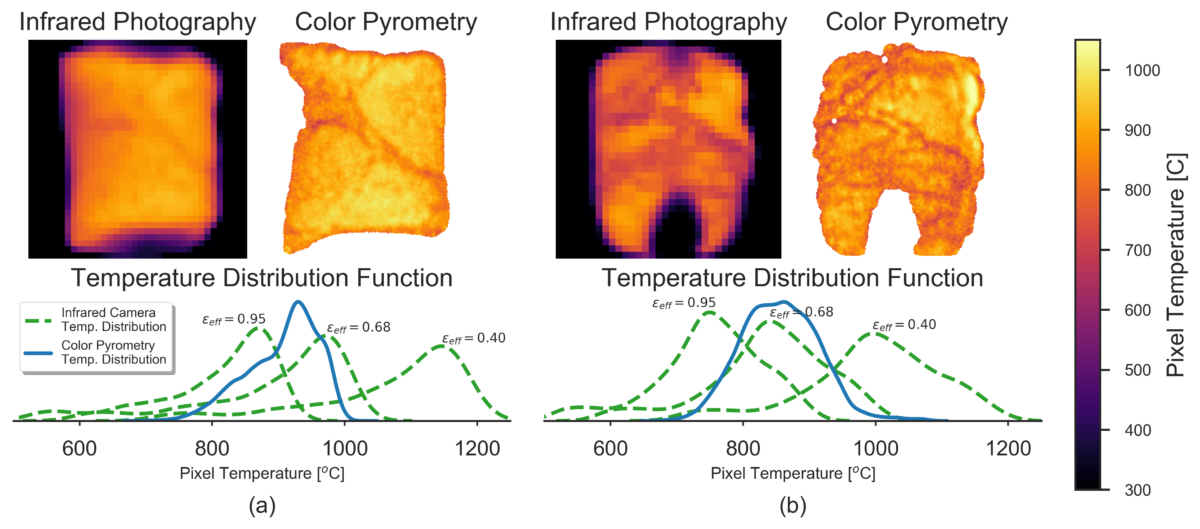

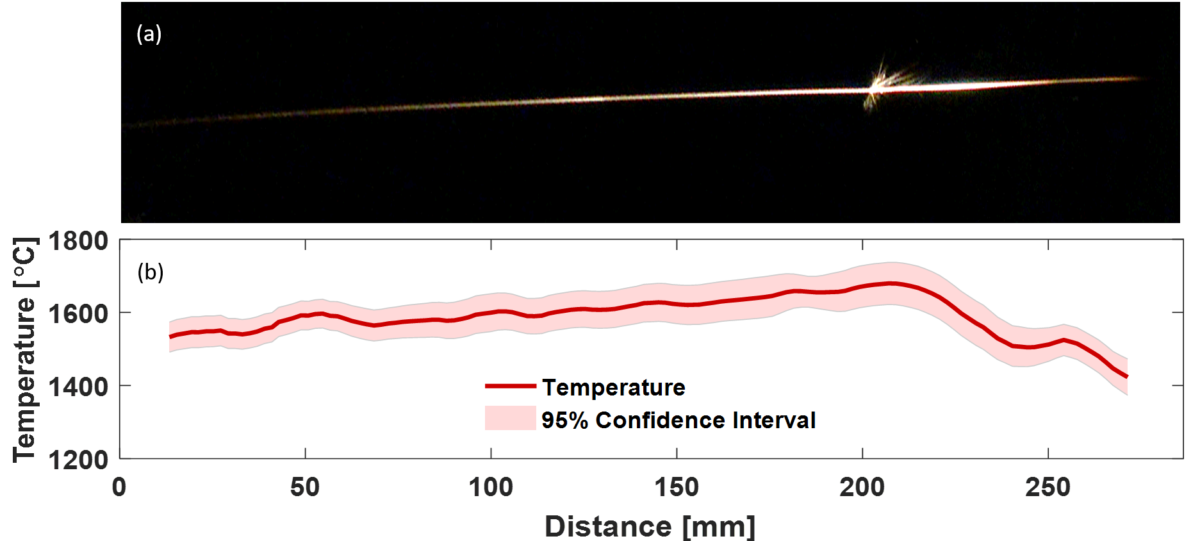
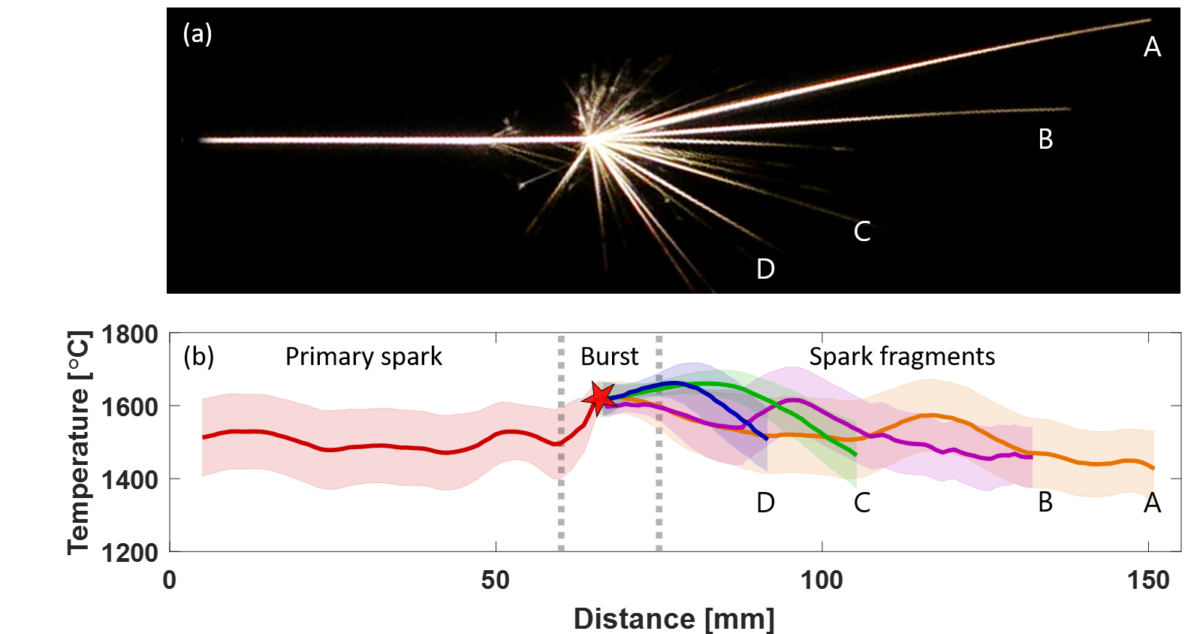
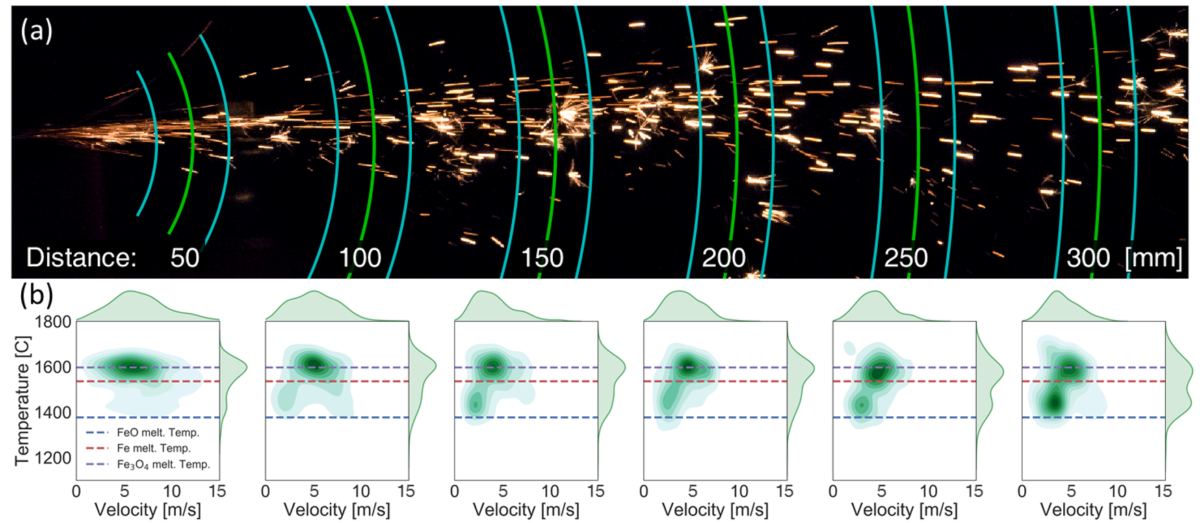
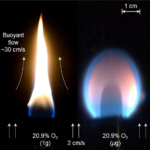
 The focus of this research is to understand how these new environmental conditions could affect the fire behavior. In this research, a small-scale wind tunnel is used to conduct flame spread experiments over a cylindrical polymer,
The focus of this research is to understand how these new environmental conditions could affect the fire behavior. In this research, a small-scale wind tunnel is used to conduct flame spread experiments over a cylindrical polymer, 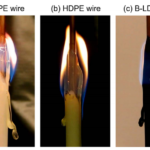
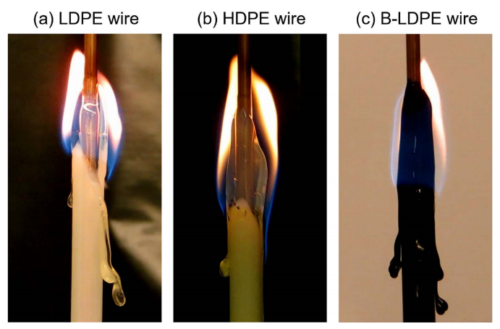 Electrical wires with flammable polymer insulation and metal core are responsible for fire accidents in space exploration missions, because of poor contact, short circuiting, external heating, and ground fault, electrical wires and harnesses are easy to ignite. As a support for “International Standard of Space Fire Safety”, the focus of this research is to understand the changes in flammability of electrical wires under external radiation in the environment expected in space-based facilities. Experiments are first designed and conducted in normal gravity to measure the limiting oxygen concentration (LOC) and flame spread rate for different wire core conditions and insulation materials. The melting and dripping (see video) of the wire insulation are also investigated. Meanwhile, the numerical simulations of wire combustion are conducted to predict potential wire fires in the conditions expected in microgravity and Space Exploration Atmospheres (SEA).
Electrical wires with flammable polymer insulation and metal core are responsible for fire accidents in space exploration missions, because of poor contact, short circuiting, external heating, and ground fault, electrical wires and harnesses are easy to ignite. As a support for “International Standard of Space Fire Safety”, the focus of this research is to understand the changes in flammability of electrical wires under external radiation in the environment expected in space-based facilities. Experiments are first designed and conducted in normal gravity to measure the limiting oxygen concentration (LOC) and flame spread rate for different wire core conditions and insulation materials. The melting and dripping (see video) of the wire insulation are also investigated. Meanwhile, the numerical simulations of wire combustion are conducted to predict potential wire fires in the conditions expected in microgravity and Space Exploration Atmospheres (SEA).